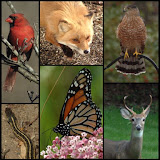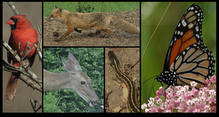Birds-in-Flight: Red-Shouldered Hawk from Ground to Tree Perch
This red-shouldered hawk, along with its mate, appeared in the Colvin Run Habitat early last March. They were observed perched, calling, and flying together for over an hour.
They had been seen for a few minutes at a time for the preceding month. Given the time and the amount of calling this day, I believe that they proceeded to the top of one of the white pine for mating.


These next photos show the progression from in-flight barely off the ground to being perched on a tree branch about 7 feet off the ground.
As it approaches its targeted perch, the hawk seeks more lift and less speed. Similar to an airplane, the hawk puts its flaps down.
It does this by, rotating its wings from a horizontal to a near vertical position - increasing lift and decreasing speed. All birds do this as they approach a perch. The result is that they, counter to our intuition, approach a perch from below, not from above - they flight up to, not glide down to the perch.
And, with that power and lift, the hawk perches on the tree branch.
You might ask why the technical quality of these photos are, well shall we say, not the best. First, the hawk was in near constant motion. Second, I was in near constant motion - these photos were taken by me walking to within 30 feet of this hawk. Third, the photos were taken on a cloudy day - not lots of light. The telephoto lense that I was using requires lots of light, else the shutter speed and aperture are not optimal for crisp photos. Fourth, the hawk is flying among tree branches. These tree branches confuse the camera's autofocus mechanism. In short, subject and photographer moving, low light, and focus in progress as photo is shot. Oh, to be sitting still to take slow walking marine birds on a beach in sunny Florida.



No comments:
Post a Comment